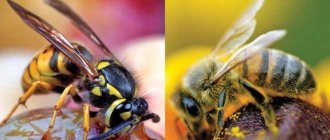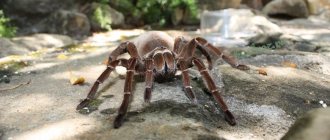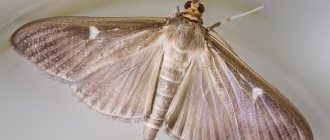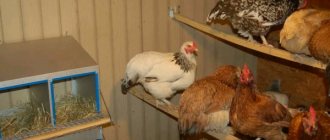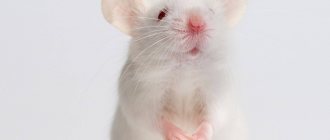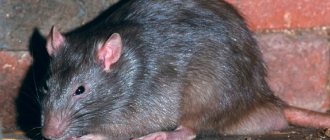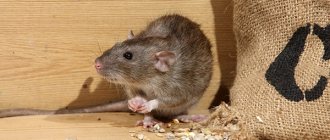Most pet rodent owners are concerned about the proper development of their rat pups. In this article, we will take a detailed look at the stages of development of baby rats, the rules for caring for them, and when they are ready to start interacting with their owners. We will also learn how newborn rats behave and learn how to properly care for them.
In addition, we will answer common questions from owners, such as “when do newborn rodents open their eyes?” and “what should I feed them?” And most importantly, we will learn what needs to be done to ensure that the baby grows up to be a healthy and happy rat.
How many pups are usually in a litter?
Typically, wild rats produce offspring ranging from four to eight pups. However, well-cared for pet rats can have litters that exceed this limit.
Female rats have 12 teats (even more than mice, cats and dogs), so they are capable of raising a large number of newborn rat pups. For this reason, most owners will not have to feed their young.
Litter
When solving the problem of how to distinguish a house mouse from a rat, you need to pay attention to the products of their vital activity, since this is often the only thing that reminds you of rodents. The differences between rat and mouse droppings are the shape, size and location. Rodents of different species leave waste products that differ in color and size. Thus, black rat droppings are large formations up to 12 mm in length, dark in color.
The red counterparts leave behind droppings that resemble oat grains in shape and are brown in color. Mouse feces are small, outwardly similar to pointed granules no larger than 6 mm in size. In addition, mice defecate chaotically, and rats usually leave droppings in one place.
Interesting video: Smart Rats
Determining the type of rodent by the type of spoiled food
Preferred foods are affected first. For mice these are cereals. Moreover, they leave behind a large amount of litter and husks, but the rat eats the whole grain. In addition, large rodents do not feed in one place for several days, so the damage they cause is always greater. If the mouse returns to the same place every time to eat (for example, a bag or bag of cereal), then traces of the rat’s teeth remain everywhere: on furniture, food: cereals, fruits, etc.
Related posts:
What do newborn rat pups look like?
On the day they are born, newborn rats can easily fit into a teaspoon. Their eyes are completely closed and their ears are flat against their head. The tail of an animal at birth is much shorter relative to body length than that of an adult rodent.
Newborn rats have baby teeth and antennae, but no hair or skin pigment. For this reason, all cubs first have pink bodies. Their skin is so thin and transparent that you can see the shape of their eyeballs through their eyelids. Many owners also note that milk is clearly visible in their tummies after feeding.
How to distinguish a mouse from a rat
If you need to determine the difference between a mouse and a baby rat, you need to pay attention to the size: even a newborn baby rat will be larger in size than any mouse. The remaining characteristics are similar to adult individuals: the shape of the ears, paws, fur, etc. Very often, people encounter certain difficulties when trying to distinguish a mouse from a baby rat. The main differences are as follows:
- An adult vole has a more pointed muzzle, while pups have a blunt muzzle.
- The tail of an adult mouse is as long as the body with 180 scale rings, while a baby rat has 220 scale rings.
- There are folds of skin on the feet of baby rats, but they are absent in mice.
Despite the same size of the feet of a month-old baby rat and an adult mouse, the footprints they leave look different: the former have toes widely spaced from each other on the print, and there are folds between them, while the latter are characterized by narrow footprints and tightly fitting toes.
And although rats and mice look the same in many ways, there are still certain differences between them in physiological characteristics, habits and food preferences. Focusing on the above signs, you will not only understand how to distinguish a rat from a mouse, but also learn how to select the right methods for controlling rodent pests.
Stages of development of baby rats
Before rats can leave their mother, they must develop properly. Cubs usually develop quite quickly physically and mentally. It is very interesting to observe such a transition of a rat from a defenseless animal to a full-fledged adult. Let's look at the development of rats week by week:
- First week
The pigment begins to appear on the skin almost immediately after the animal is born. However, only after five days can peach hairs be seen on the body of a newborn rat.
Until 5 days of age, the rodent practically does not move. He can only raise his head and fall back down onto his stomach if he fails to rise.
Although these newborn rodents lack vision and hearing, they use their whiskers to find their mother's nipple or their siblings.
- Second week
The baby rats begin to develop full-fledged fur. They can also now stand up on their feet. At the end of the second week, baby rats usually take their first steps.
However, another big change awaits them. On the tenth day, the ears stop pressing against the head, and on the twelfth day, the ear canal begins to open.
- Third week
At the beginning of the third week, the rat's weight should exceed 4 times its birth weight. Also, their sense of smell and taste will be almost fully developed by this age. In addition, their eyes should open completely.
- Fourth week
Once the pups reach 4 weeks of age, they become more and more like adults. By the end of this week, their fragile tails will become stronger and more coordinated. The baby rodent hairs will be replaced by thick fur and undercoat.
The little rats are filled with energy and want to explore everything around them. Another important point is that at this age they wean themselves from drinking their mother’s milk. Therefore, the female will spend significantly more time outside the nest.
- Fifth week
At this stage, rats begin to demand solid food. They no longer need milk alone to get energy.
They also begin to spend a lot of time grooming, digging, playing with their siblings, and asserting their independence. By the end of this week, it is important to separate the males from the females as the rats reach sexual maturity. Also, the fifth week is the most important for the development of social skills in the rodent.
- Sixth week
At 6 weeks of age, rats are ready to leave home and go to new owners. They get rid of their childhood habits and no longer need their mother's milk.
Between six and eight years of age, baby rats go through the equivalent of puberty and adolescence. After this period they can be considered adults.
How a rat takes care of its pups
Rodents by their nature are excellent mothers; a rat spends the entire day with its pups, tenderly caring for, feeding and caring for the babies. The female covers her large brood with her body all day, warming and protecting the cubs. The warmth of the rat's body and frequent feeding with nutritious milk stimulate the development of all organ systems of small animals; it is almost impossible to feed and keep newborn babies alive without the care of the mother.
Sometimes a rat produces a litter of 15-20 pups
, some of the stronger cubs more often than others end up near the nipple with milk, the rest of the pups may die without feeding. In such cases, in the second week, you can place briefly fed nimble babies in a separate container, maintaining a constant temperature of 39C in it; for this purpose, you can use a heating pad or bottles of warm water.
At birth, baby rats cannot empty their bowels on their own; the mother often licks the babies' bellies, stimulating bowel function and removing newborn feces.
A small rat is a completely hairless creature; the body of a tiny animal becomes overgrown with fur only in the second week of the rodent’s life. Decorative rat cubs are not able to maintain a constant body temperature, so naked babies physically cannot survive without the warm belly of their mother.
If the mother leaves the newborns for a few minutes, the body temperature of the pups instantly drops, they stop moving and fall asleep. The mother carefully monitors the body temperature of each baby all day, and if necessary, the rat changes places between the children.
The rat gradually reduces the time spent near children, adapting newborns to environmental conditions and independently maintaining normal body temperature. If at birth the female practically does not leave a brood, then by the end of the first week the babies spend a third of their time without their mother, with a further increase in their independent period.
Why do baby rats cuddle together?
Looking inside a baby rat's nest, you can hardly tell where one baby ends and the next begins. It's a truly fascinating instinct that serves an important purpose. Small rodents do not have fur, so they quickly lose heat. By clinging to each other, they prevent heat loss.
By doing this, newborn rats also expend less energy on maintaining heat. They subsequently invest this energy in the development of the body.
What do baby rats sound like?
So, we learned that baby rats can hear, but what sounds do they make themselves?
From an early age, rats use ultrasonic vocalizations to signal to their mother that they are cold, lonely or low on milk. These squeak-like sounds are far beyond our audibility. However, an adult rat distinguishes them with ease. This is a fairly important part of the behavior of baby rats.
Keep this in mind if you ever disturb a baby rat's nest. Just because you don't hear their protests doesn't mean they are happy with your behavior. And, if you hear baby rats squeaking, you need to leave.
Description of the animal
White rats are considered one of the most popular pets. Back in the 18th century, they seriously interested the Chinese, and they began to gradually tame them. Later, the rodents came to America and were crossed with albino rats. These animals have recessive genes and a unique set of chromosomes. Therefore, it is almost impossible to obtain them at home.
Nowadays, albino rats are actively bred in laboratories and are used for scientific research in the fields of toxicology, genetics, virology, micro- and radiobiology.
Appearance
The white rat is medium in size. The weight of an adult male is 400-650 g. Females are smaller in size and weigh between 300-450 g.
Externally, albino rats can be easily distinguished by the following characteristics:
- the muzzle is elongated, slightly pointed;
- the body is stocky, oval;
- eyes and ears are small;
- the tail is long, almost naked, covered with ring scales and sparse hairs;
- The molars grow in dense rows; between them and the elongated incisors there are free areas - diastemas.
Character and habits
White pet rats are funny animals that are very interesting to watch. They quickly get used to different conditions and easily adapt to the rhythm of life of their owners. Newly purchased young albinos can initially sleep during the day and be active at night. But after a few days, rodents develop new habits and adapt to the changed schedule.
Smart and curious albinos do not need constant walks. But in warm weather they will be happy to be outside (the pet is placed on the owner’s shoulder). Although white rats are not particularly timid, in an unfamiliar environment they will prefer to hide under the collar or in the owner’s pocket.
Contact albinos need constant communication with people and their own kind. White rats love to be petted and do not tolerate mistreatment. With a lack of attention, rodents can become fearful and angry.
Health and life expectancy
Decorative white rats with red eyes are characterized by poor health and live on average about 1.5 years. But with favorable conditions and proper care, this figure can increase to 3-3.5 years. Rodents that are bred in laboratories live up to 4 years.
A white rat with red eyes is prone to the following diseases:
- mycoplasma infection;
- suppuration and dermatological problems;
- allergies;
- problems with teeth due to their accelerated growth.
What to feed the baby rats?
Rats need nothing more than their mother's milk to grow until they are 21 days old.
Orphaned rats can be raised on formula after consulting with a veterinarian about the proper diet.
At 21 days they are ready to try their first solid food. They usually start with something soft and light, like yogurt, a ripe banana, or their mother's regular rat pellets. You can soften them for easier consumption by your baby rats.
However, these products do not replace breast milk overnight. They will continue to feed from their mother for several more weeks.
Animal behavior
If you fail to catch a rodent, you should pay attention to the traces it leaves. The paw prints left by rats are quite clear and sparse, since they move in hops. As for the tracks left by mice, they are more frequent. A careful inspection of the lower part of the walls will help you identify the uninvited guest. When rats move, they press against the surface, leaving abrasions. Mice are more careful in this regard, so there are no characteristic marks left behind. Pasyuk is a rather aggressive creature that can attack a person if it feels that his life is in danger, which cannot be said about the practically harmless mouse, which often runs away at the sight of a person.
The house mouse is one of the most common species of mammals, whose life is closely related to humans.
Intelligence difference
In terms of mental development, a rat is significantly superior to a mouse. Some people even compare large rodents to dogs and cats. They are more careful and discerning. When choosing a new place to settle, Pasyuks first explore the territory to make sure it is safe. Because of this quality, it is quite difficult to get rid of rats using various poisons. Due to the ability of a large rodent to regulate its population, as soon as the rat population decreases, the number of litters increases.
Mice and rats (video)
Food preferences
You can also determine the type of pest by assessing the property. Unlike mice, which like to spoil soft objects (paper, cellophane, polystyrene foam, leather, as well as seeds, flour and cereals), rats, which are not particularly picky eaters, prefer hard surfaces. They eat both meat and plant foods, so they can cause damage to absolutely any food found in the house. Pasyuki are mainly found in places with household and food waste.
When do rats open their eyes?
Even when the eyelids are closed, the eyes of newborn rats are sensitive to light. If you suddenly let light into their nest, you will notice that they try to isolate themselves from the light as much as possible, depending on their stage of development.
They usually finally open their eyes around the 15th day after birth. Now they can see normally, although it may seem different to us. This is because their vision is much worse than ours. But what’s interesting is that their viewing angle is much wider. It even includes the area above their heads, as well as in front of them and to the sides.
How do rats give birth?
Immediately before giving birth, the female completely refuses to eat, tries to retire, and straightens the nest. During this period, it is recommended to protect the animal from stress, which can cause pathological birth and death of the pet along with the offspring. It is advisable to place the cage in a warm, dry, dark place; the distance between the rods should be minimal. Make sure your pet has a full water bottle. When rats are born, the female loses a lot of fluid; in the absence of water, the animal eats its newborn cubs.
The first signs of the onset of labor
Rat births often occur at night and last 1-2 hours. The first symptoms of the onset of labor are the passage of the plug in the form of bloody discharge from the female’s vagina. During pregnancy, the plug served as a natural barrier and protected the pet's uterus and fetuses from pathogenic microflora from the outside.
How does the birth process work?
Then contractions begin, aimed at pushing the babies out of the uterine cavity. During this period, the female’s body elongates as much as possible, and the sides on both sides retract. Contractions are very painful; you should not disturb the rodent during this period, so as not to provoke uterine spasm and death of the pet.
When the cubs are ready to emerge, the female sits down and helps the babies to be born with the help of her paws and teeth. Each newborn rat pup is born in a sac filled with liquid, the female tears it open with her teeth, removes the baby, gnaws the umbilical cord and licks the baby, cleaning and drying it.
Licking the skin of a newborn by a rat stimulates the lungs of the small animal; it should squeak and move, which indicates its health. If the baby shows no signs of life, the female may eat him.
Most often, a rat gives birth safely, but one should not exclude the possibility of a pathological course of delivery.
A sign of problematic labor may be the duration of this physiological process for more than 2 hours or the occurrence of bleeding.
In such situations, the owner is obliged to come to the aid of the giving birth rat:
- if the female is already tired and the first baby is not born, then the baby could be stuck in the birth canal. It is advisable to feed the rat half a teaspoon of honey to restore lost energy and massage the belly with soft circular movements, trying to turn the little rat around and direct it towards the exit;
- If the tail or head of a newborn emerges from the vulva, and the rat cannot push it out on its own, you can wrap the baby in a soft towel and slowly, gently pull it out of the birth canal. After the birth of the first baby, the rest come out without problems;
- if your efforts do not help the female, in case of prolonged labor for more than 3 hours, bleeding begins, an emergency caesarean section is necessary to save the pet and the pups. It is advisable to agree with a veterinarian in advance or find out the addresses of clinics that will accept your pet at any time in the event of a complicated birth.
After the end of labor
After birth, the rat eats the placenta and umbilical cord, and takes care of the babies. When you are sure that labor is over, carefully place a bowl of weak tea, diluted in half with cream, into the cage
. This drink will restore fluid and energy loss after birth and stimulate the production of sufficient milk to feed the babies. Do not leave the bowl in the cage for a long time so that the rat does not crush the babies with it.
Socialization of young rats
Rats should always be kept in pairs or large groups throughout their lives. Playing with their littermates is a vital part of baby rats' social development. Lack of company and interaction with other rats is a huge stress for them. This is largely due to the fact that rats kept in isolation as they grow up do not acquire the social skills needed to live peacefully with other rats.
So responsible breeders always make sure that the little rat is in the company of the younger generation. This way, they will grow up to be healthy and sociable individuals. This does affect the behavior of the baby rats as they get older.
Rat - description, appearance and characteristics. What does a rat look like?
Rats have an oval body shape and a stocky build, characteristic of most rodents. The body length of an adult rat ranges from 8 to 30 cm (depending on the species), the weight of the rat varies from 37 g to 420 g (individual gray rats can weigh up to 500 grams).
The rat's muzzle is elongated and pointed, its eyes and ears are small. The tail of most species is practically naked, covered with sparse hairs and ring scales.
The black rat's tail is covered with thick fur. The length of the tail of most species is equal to the size of the body or even exceeds it (but there are also short-tailed rats).
Black Rat Tail
The rodent's jaws contain 2 pairs of elongated incisors. Rat molars grow in dense rows and are designed for grinding food. Between the incisors and molars there is a diastema - an area of the jaw where teeth do not grow. Despite the fact that rats are omnivores, they are distinguished from predators by the absence of fangs.
Animals' incisors need constant grinding, otherwise the rat simply will not be able to close its mouth. This feature is due to the absence of roots and the continuous growth of the incisors throughout the life of the animal. The front of the incisors are covered with hard enamel, but there is no enamel layer at the back, so the surface of the incisors is ground unevenly and takes on a characteristic shape reminiscent of a chisel. The teeth of rats are extremely strong and can easily gnaw through brick, concrete, hard metals and alloys, although they were originally intended by nature to eat plant foods.
The rat's fur is dense, relatively thick, with pronounced guard hairs.
The color of a rat's fur can be dark gray, gray-brown; in the color of some individuals, reddish, orange and yellow shades can be traced.
Rats have poorly developed calluses on their paws, which are necessary for rodents to climb, but the functional deficiency is compensated by mobile fingers.
Therefore, rats are capable of leading not only a terrestrial, but also a semi-arboreal lifestyle, climbing trees and making nests in abandoned hollows.
Rats are very active and resilient animals, they run well: in case of danger, the animal reaches speeds of up to 10 km/h, overcoming obstacles up to 1 meter high. A rat's daily exercise ranges from 8 to 17 km.
Rats swim and dive well, catch fish and can continuously stay in water for more than 3 days without harm to their health.
Photo by: Kristyna Burgerova
Rats' vision is poor and has a small viewing angle (only 16 degrees), which forces the animals to constantly turn their heads. Rodents perceive the world around them in shades of gray, and the color red represents complete darkness for them.
Hearing and smell function well: rats perceive sounds with a frequency of up to 40 kHz (for comparison: humans up to 20 kHz), and detect odors at short distances. But rats tolerate the effects of radiation very well (up to 300 roentgens/hour).
The lifespan of a rat in the wild depends on the species: gray rats live about 1.5 years, rare specimens can live up to 3 years, black rats live no more than a year.
In laboratory conditions, the life of a rodent increases by 2 times. According to the Guinness Book of Records, the oldest rat was 7 years and 8 months old at the time of death.
How long should baby rats stay with their mothers?
Usually six weeks. This includes a period of nursing the cubs and their final weaning after approximately 5 weeks (21 days).
Many people ask this question, especially when they find orphan rats. What to do if you find orphan rats? How to feed them? As mentioned earlier, if the mother is unable to nurse, you can feed the rat baby formula. Just be sure to seek help from a veterinarian.
How to care for baby rats?
Knowing how to care for baby rats is an important part of rat ownership. There are four main aspects of caring for newborn animals:
- Finding suitable housing
: If you live in a house, especially if you have other pets, you need to keep your baby rats safe. For them you need to purchase a cage (experts recommend 75 cubic centimeters per rat). The cage should be made of wire with holes of at least half a centimeter between the rods. Don't forget to take care of other things such as litter, tunnels, and a place for the rodent to play. - Taking care of their health
: The early days are critical to ensuring your pet's health, so it is recommended that you take your rat to the vet as soon as possible. Once the preliminary visits are completed, it is recommended that you see a specialist every six months. - Socialization
: To make your pet comfortable, be sure to find him another rat friend or littermate. For your part, be careful with your rats - handle them carefully and, of course, use positive reinforcement. Treats always work better than punishment. - Feeding baby rats
: Baby rats only need milk or formula for early development. Once your rat is weaned, you will need to find the best way to feed it using suitable rat kibble.
Let's now look at the aspects of caring for baby rats in more detail.
How do rats give birth?
Many owners who dream of seeing rat pups born do not realize that the process itself is unattractive and painful for the animal. Moreover, it is better to leave the rat alone - put it in a room where people rarely appear, in a secluded place, providing it with food and water.
Shortly after the spotting appears, contractions begin. The female's body is stretched out, while the sides are drawn in to the limit. This happens several times. As soon as the rat senses that the baby is on the way, it sits down and helps it out, after which it gnaws the umbilical cord, licks the baby, and then eats the afterbirth.
Good to know. If the baby rat does not squeak or move, its mother will most likely eat it too.
Pathological birth
Some rat breeders believe that if the first rat pup is born, then the rest should be born without problems. This statement is partly true, but this does not always happen. The owner should be alerted by the mother’s inappropriate behavior:
- she puts aside the born rat pups and does not show attention to them - if the birth is successful, the rat must gather the babies into a pile and start feeding them;
- contractions continue for more than 2 hours, and the next baby does not appear;
- the female looks tired, hid in a corner, disheveled, licking the genitals, from which blood is released.
You can help the animal by gently massaging the belly, but such manipulation rarely helps. It is best to call a veterinarian-ratologist at home to perform a caesarean section.
Another option for abnormal labor is described above (see discharge from the genitals). From the moment contractions begin until the appearance of the last baby, an average of 2 hours passes; in case of multiple pregnancy, more is possible. If the rat is “squashed” for longer, but the pups do not appear, the animal develops shock. Only an experienced ratologist can help in such a situation.
On a note. The uterus in rats has the shape of the Latin letter “Y”. The baby rat can get stuck in the septum or directly in the birth canal, which often happens in females who give birth for the first time after the age of 8 months.
If labor continues for a long time, the cubs may be born in a “shirt,” but the mother rat may no longer have the strength to free them and gnaw the umbilical cord. The owner’s task is to help her with this:
- Wash your hands and treat them with alcohol or vodka.
- Take nail scissors, treat them with chlorhexidine, or better yet, put them directly into the antiseptic solution.
- Cut a piece of sterile bandage, wrap it around the first and index fingers of your left hand and take the little rat with it.
- Using nail scissors, carefully pierce the amniotic sac and then make an incision. Act with extreme precision so as not to accidentally injure the newborn.
- Free the baby rat from the amniotic sac and clean his mouth of mucus with a piece of bandage. He should take a deep breath, which indicates the opening of the lungs.
- Cut the umbilical cord at a distance of approximately 3-4 mm from the body, treat the stump with chlorhexidine.
- Now soak your fingers in sea buckthorn oil and gently massage the baby. Imitate the movements of the mother's tongue - it should turn pink and squeak.
How many rat pups are there in a litter?
It all depends on the animal. A rat can give birth to 2 or 22 babies. The average number of rat pups is 12-14, maximum 25.
The larger the offspring, the more difficult it is for the mother to feed them. Rats have 12 nipples. If the animal cannot cope and it is clearly noticeable that some babies eat well - they have full bellies with a thick white stripe (stomach filled with milk), while others are stunted, lethargic, with wrinkled skin, you will have to help them and the rat:
- Count the number of pups in the litter and divide the result in half.
- Leave the mother one part - the part where the cubs are malnourished, and place the other on a mountain of soft napkins in a closed carrier with holes and place it next to something warm, for example, a radiator or a bottle of hot water. But be careful not to overheat the kids.
- After 4 hours, change the positions of the pups.
- Do this until the weak are equal in stature to the strong. In the future, you can try to leave the rat with the entire litter, but observe how it copes with feeding.
Sources:
https://anydaylife.com/post/3258 https://homkin.ru/krysy/zdorovie-krys/rody-u-krysy.html https://zverek.club/rody-u-krys/
Can baby rats drink cow's milk?
No, cow's milk is not recommended for baby rats. It does not contain enough nutrients that are good for your rat. However, infant formula has been used successfully for babies. If a female's milk is not available and you can't find a surrogate rat mom, stick to formula until they reach weaning age.
Please note that after feeding the baby rat, you need to periodically stroke its tummy with a warm, damp cloth. This improves digestion and helps the babies defecate when they are still very young.
How are close relatives different?
It would seem that these species are similar, but they have the biggest difference at the genetic level. Rats have 22 sets of chromosomes, mice have 20. Hence the differences in intelligence, lifestyle and behavior.
Rats are cautious animals. They are cunning, easy to train, and dexterous. Their training takes place at the dog level. One of the trained rats, Magwa, a Gambian hamster breed, received merit and a medal.
Rats have a good sense of smell and can evaluate the quality of food, temperature and humidity. In a pack of rats there is a hierarchy and responsibilities. They protect the young, care for the sick, and avoid predators.
Mice are less intelligent and do not learn or act cooperatively. Small rodents are less organized. In case of danger, they do not defend themselves, but rush about, so they become victims of predators much more often.
Both types of animals can eat plant foods, but will not give up meat. But larger rodents, rats, are more likely to attack and attack others, even mice.
